Only at RIT: Wet-Plate Collodion
Professor Willie Osterman joined the photography faculty in 1984. He taught Photo I for many years. At that time first year photography classes were 7 quarter credits per term and 21 credits for the year. RIT had more than 160 darkrooms and used 200 gallons of paper and film developers weekly. Now most of the School’s required classes are digital but we still teach a number of analog classes.
As a photographic artist, Osterman has explored many things during his 3+ decade career at RIT Photo where he currently serves as the program director for BFA – Fine Art Photography option.
In 2008, and in response to his wife’s treatments for cancer, he began to use wet-plate collodion as a therapeutic process for both he and his wife. Fast forward to 2019, Osterman has become a very talented wet-plate collodion photographer and teaches classes using the wet-plate collodion process to both undergraduate and graduate students. The class first focuses on learning how to use the process and then explores making wet-plate collodion photographs.
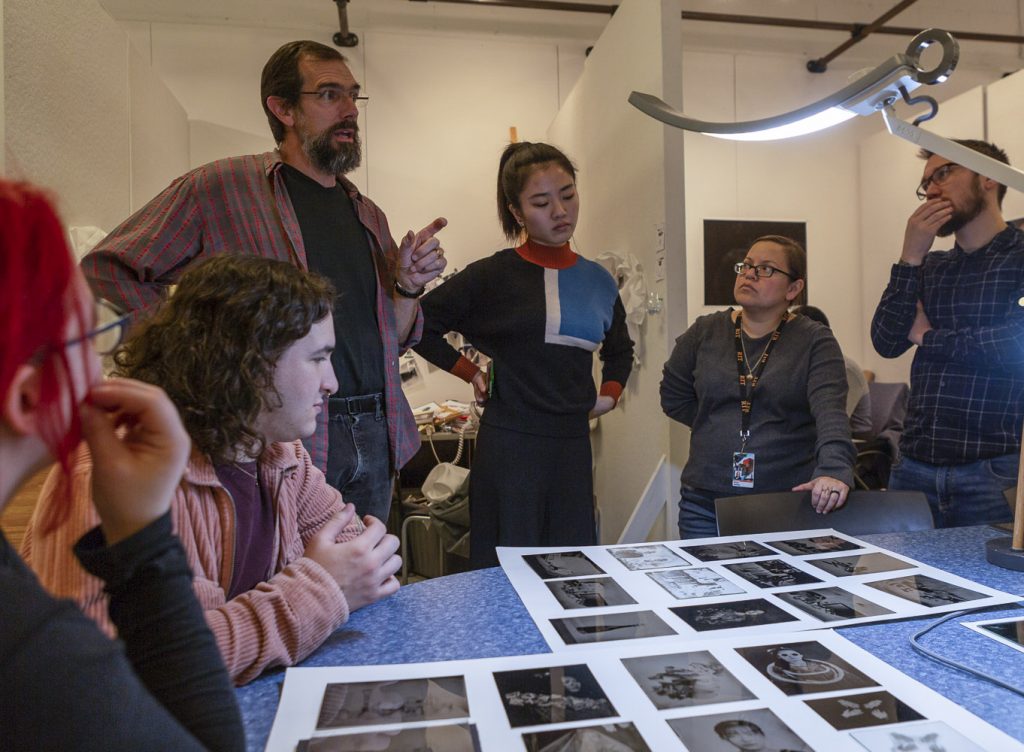
Photo by: Mariah Whitmoyer.
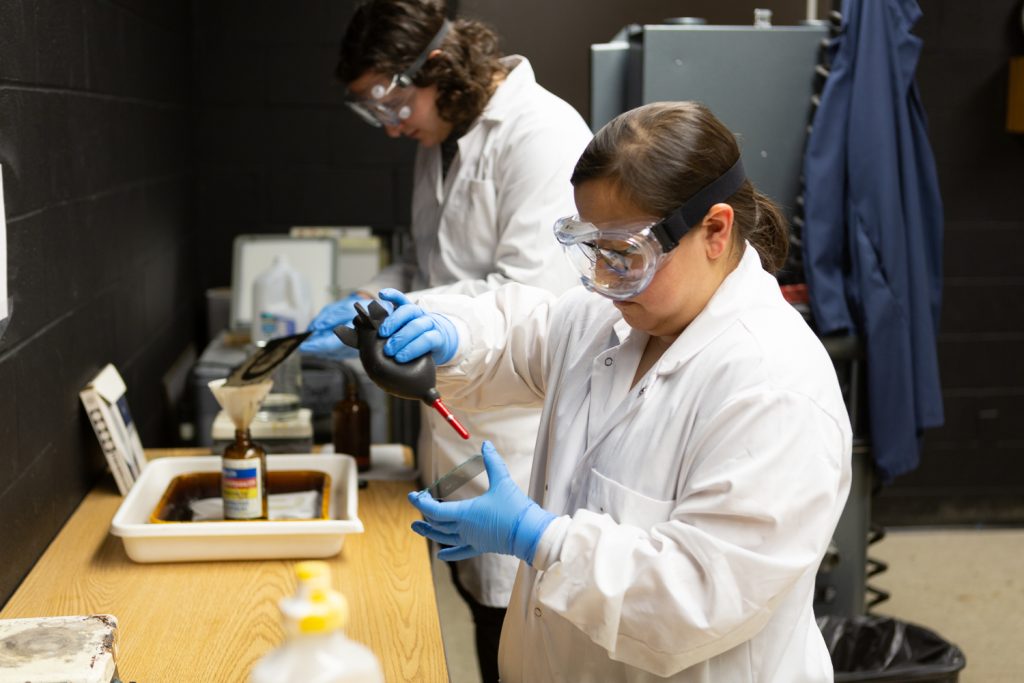

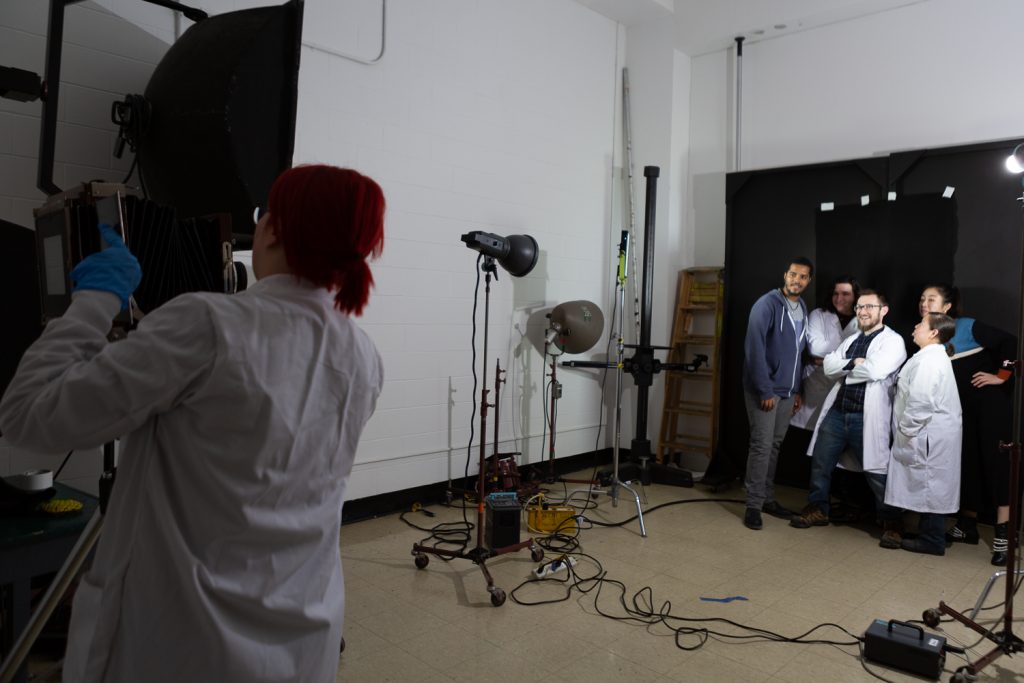
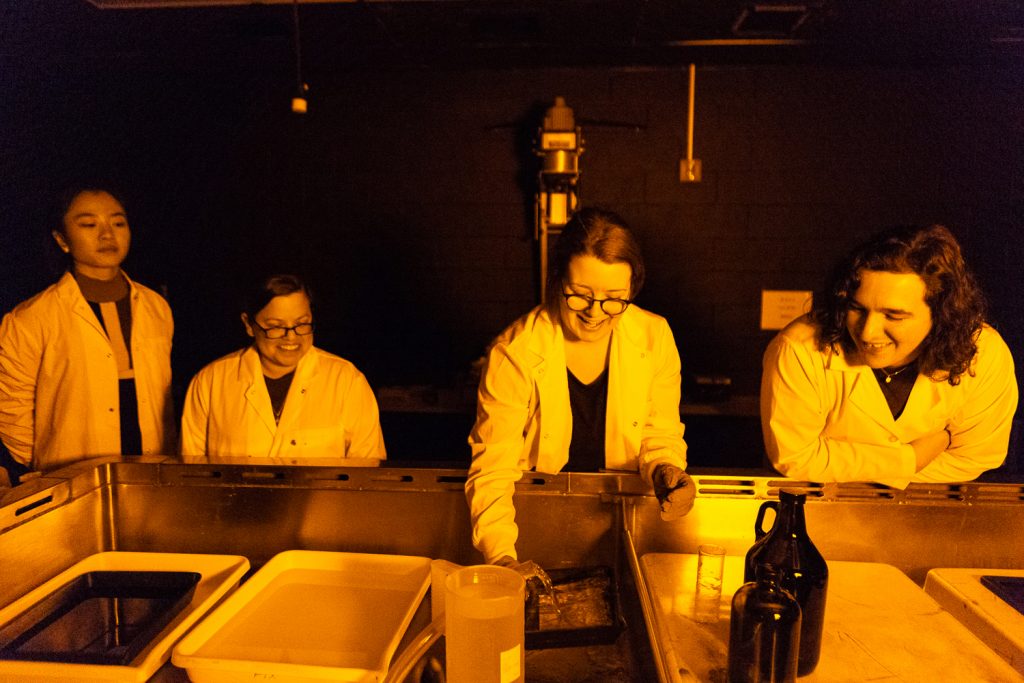
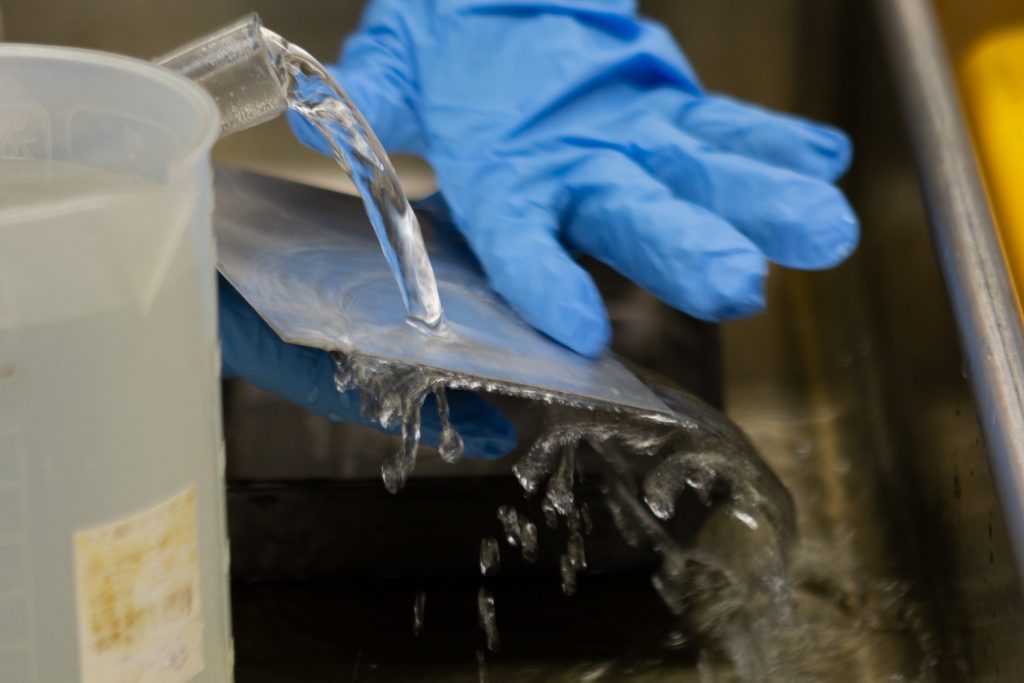
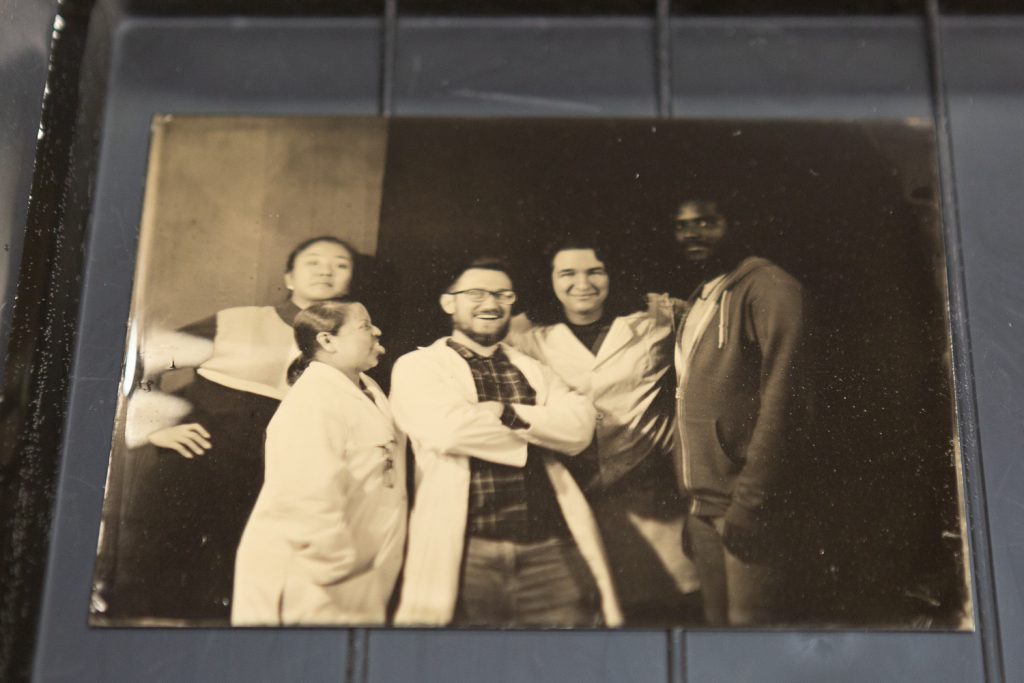
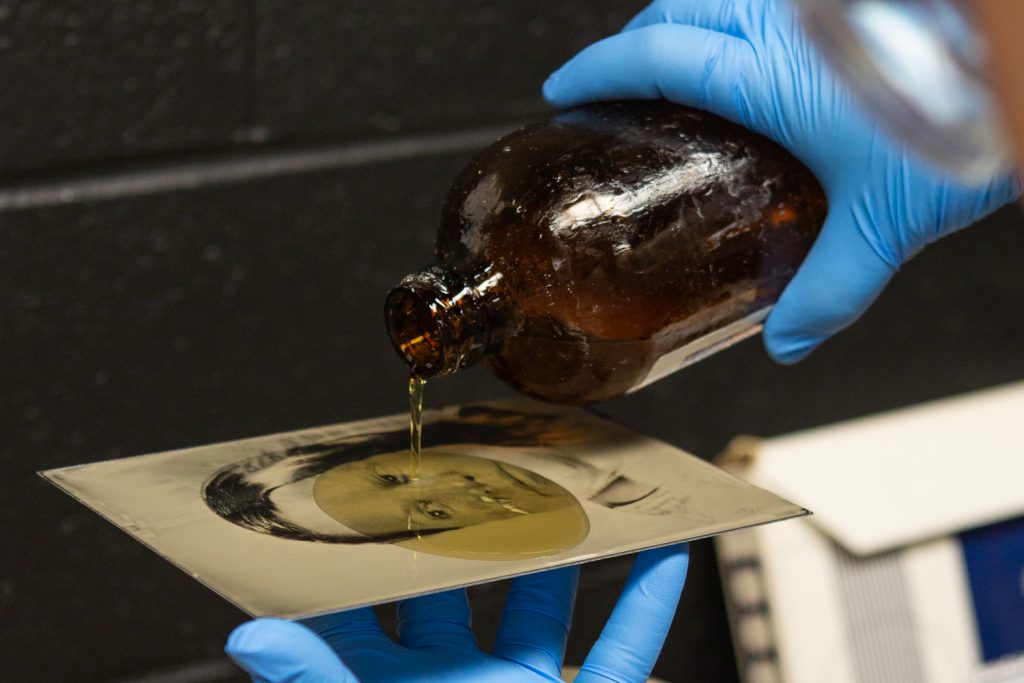
Shared below is some of Professor Osterman’s most recent work, titled Masking Portraits. You can watch a short video where Prof Osterman discusses his process
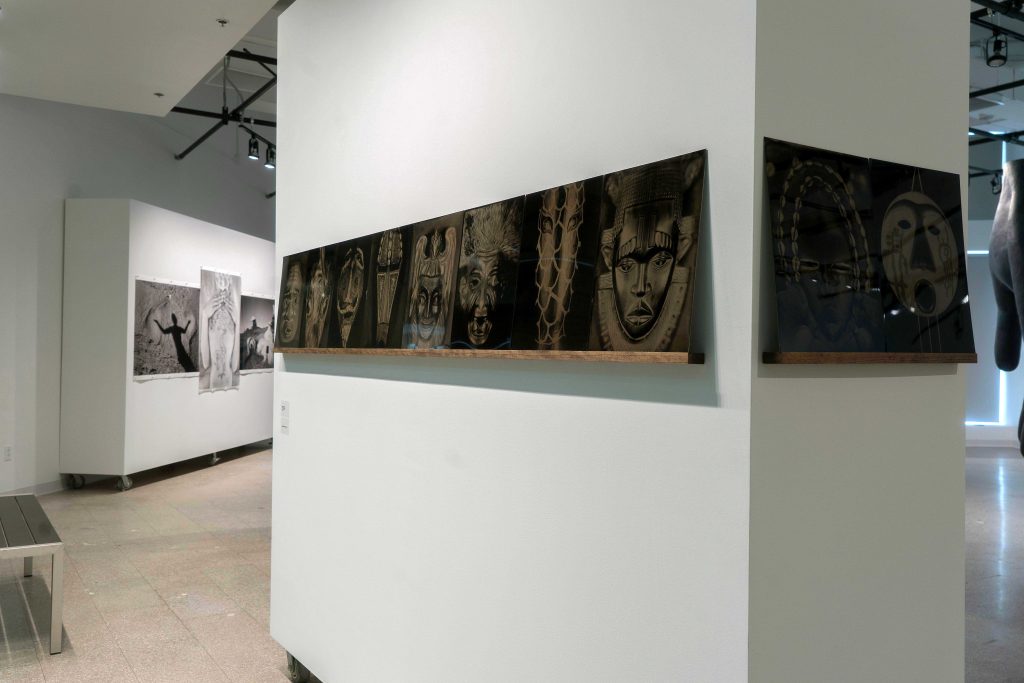
Artist Statement: Masks can be seen in almost every cultural origin in one form or another. As seen in so many aspects of cultures past and present. Ritual Masks, used by indigenous people to capture the soul of the creature represented are also used to transform one’s identity and assume a change of personality. They are also used in various roles in religious and social activities of many cultures. Masks of celebration are worn as disguises during social occasions and in many cultures masks offer protection against the forces of the real and unseen worlds.
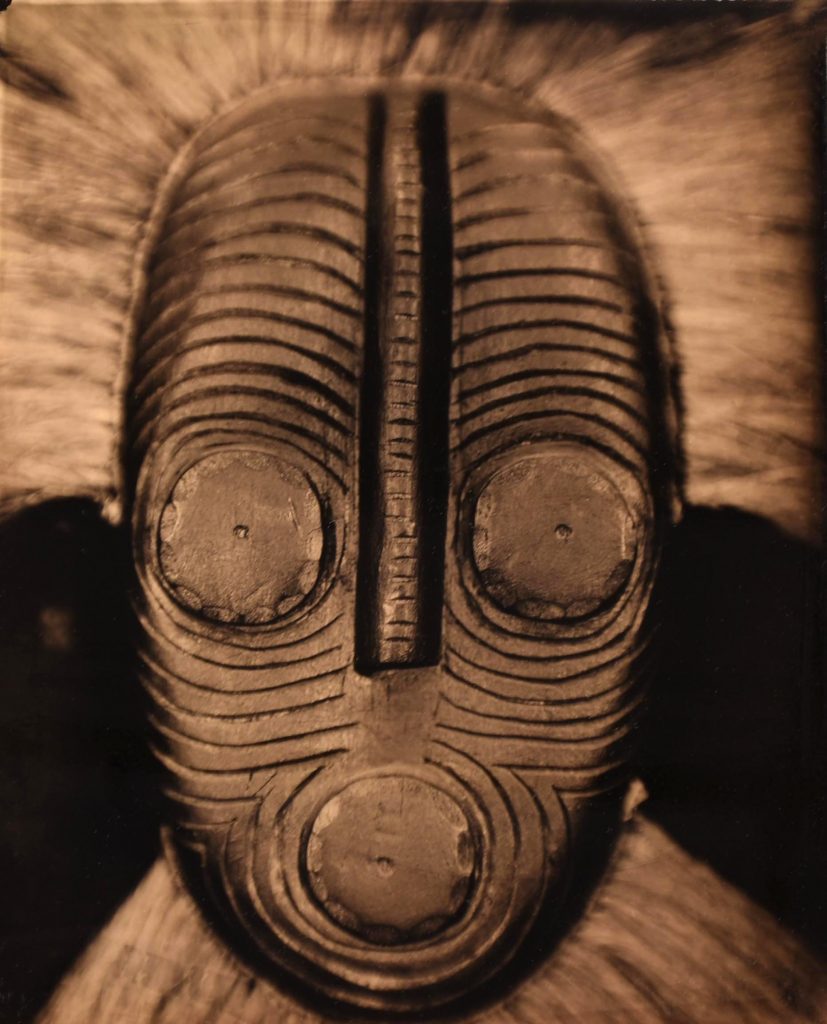
This is one of a series of over a hundred photographs that form a cross pollination of those creatures and their sprits that travel beyond boarders and time so that the culmination becomes a living universal myth that we have evolved from and can learn from. For the last few years I have been making portraits of masks from public and private collections around the region. The end goal is to create a collective of ancient ritual through modern day representations of masks that collectively will create a contemporary vision of the power and universality of the concept of Masking.
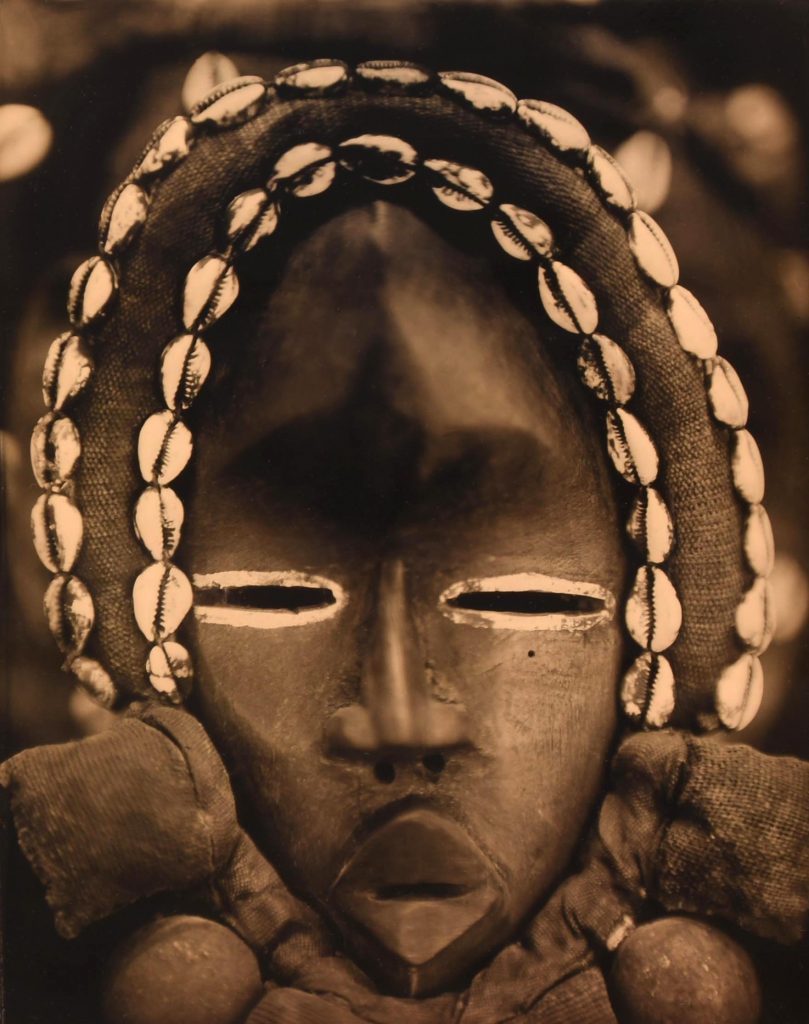
The presentation will exhibit the collection of Masking Portraits in a linear format of side-by-side portraits that will travel around the gallery walls and allow the masks to gaze back upon on the viewers in a combination of cultural identities that transcends time and place.
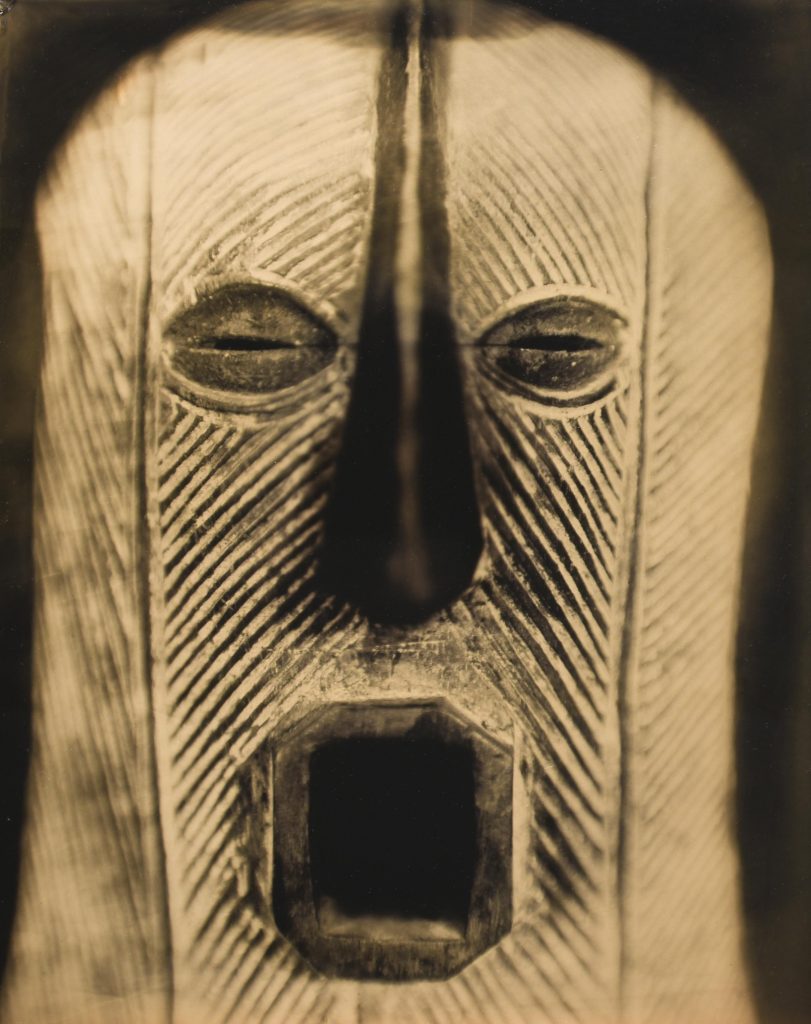
Each portrait is an 11×14 inch one of a kind image using the Wet-Plate Collodion process. Used in this way, this process, invented in 1852, creates images of unique quality and tone that are unique to any other photographic process. The use of the Collodion technique has been chosen due to its unique ability to render color in rich monochrome tones that, in my opinion, enhance the representation of the spirits of the original masks. By eliminating color this process transforms literal representations into what I call mythical transformations.
About Willie Osterman
Willie Osterman is a Professor and Program Chair of the Fine Art Photography department in the Photographic Arts Department at the Rochester Institute of Technology, New York where he has been teaching, researching and working as an active artist since 1984. He received his Bachelors of Fine Arts degree in photography with a minor in art history from Ohio University and a Master of Fine Arts degree in Visual Design and Photography with the award of two teaching fellowships from the University of Oregon.
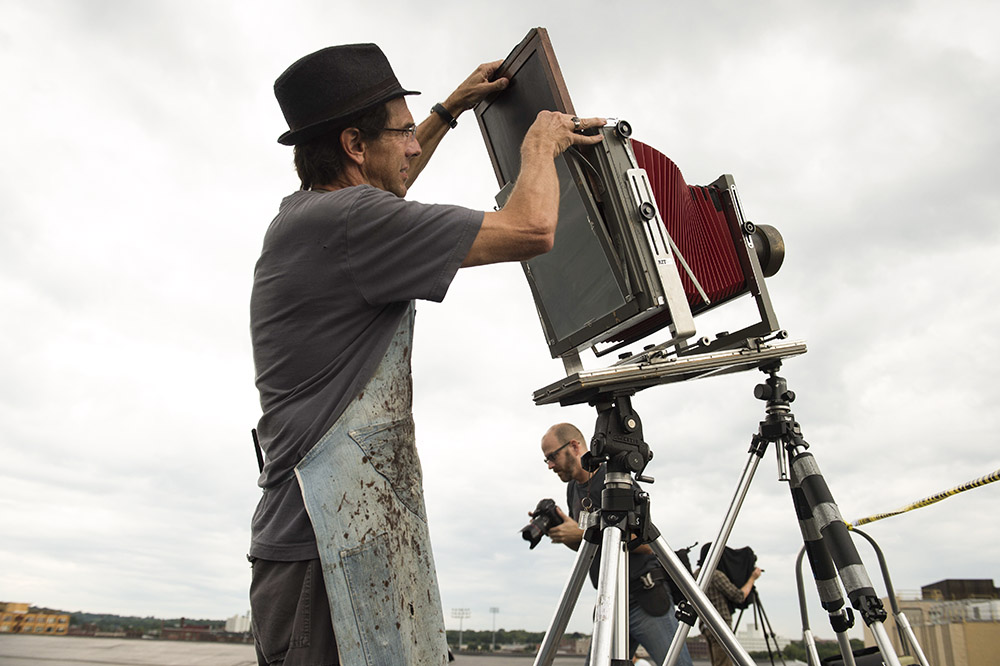
After graduating he became a visiting assistant professor at the University of Oregon for two years. His teaching experience includes the Ansel Adams Workshops in Yosemite National Park, and in traveling workshops in twelve US states as well as in Italy, France, Austria and Croatia. As Former Curator of Photography at the University of Oregon Museum of Art, he received two grants from the National Endowment of the Arts. He was a printing assistant to the production of the Ansel Adams Special Edition Prints working with Mr. Adams in Carmel California and has worked as a contract photographer for the Eastman Kodak Company. His publication ‘Déjà View: A Cultural Re-Photographic Survey of Bologna, Italy’ in its second edition is now out of print. During his sabbatical for the year 2009/10 he received a Fulbright Scholars Award to develop a Masters Degree program and teach at the Academy of the Dramatic Arts, University of Zagreb, Croatia.
His work is in numerous collections including: The Museum of Contemporary Photography, Chicago; University of New Mexico Museum of Art, Albuquerque; International Museum of Photography at the George Eastman House, Rochester, New York; New Orleans Museum of Art; Portland Museum of Art, Museum of Art, Eugene, Oregon; Lotus Collection, Salzburg, Austria; Museo della Fotografia Cinisell Balsamo, Milan, Italy; Museo Civico del Risorgimento, Bologna, Italy; Alinari Photographic Archive, Florence, Italy; Muzej Grada Zagreba (City Art Museum of Zagreb), Croatia.
He has exhibited widely in the US including: Aspen Museum of Art, Aspen, Colorado; The Gallery @ 49th Street, New York, NY; The Ansel Adams Gallery, Yosemite, California; The Photographic Center, Carmel, California; Museum of Fine Arts, St. Petersburg, Florida; The Sert Gallery, Harvard University, Cambridge, Massachusetts; Vision Gallery, San Francisco, CA, Visual Studies Workshop, Rochester, NY. His International Exhibitions, among others, include: Uluslararasi Foto raf Yari masi International Exhibition of Photography, Yildiz University, Istanbul, Turkey; Incorocio sulla via del Sale, Sacile, Italy; Centro Ricerca Archiviazione della Fotografia, Milan, Italy; USSR Traveling Photographic Exhibit; Diavassi Cultural Center, La Strada ‘Regina Margherita’ Athens, Greece; Lotus Gallery, Ernsting/Salzburg, Austria; Ping Yao International Photography Festival, Ping Yao, China; Galerija Klovicevi dvori Kula Lotrscak in Zagreb, Croatia.